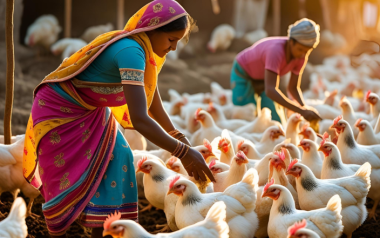“The global market for animal feed additives and nutritional supplements was valued at 54 billion USD in 2018 and is estimated to generate a net revenue of 64 billion USD by 2025”.
03 Aug 2021
The role of seaweeds in poultry nutrition II: Strategies to improve them as a feed ingredient
The bioavailability of active compounds present in seaweeds can change due to any processing such as heat or drying temperature, similar to other feed ingredients.
Available in other languages:
Content available at:
العربية (Arabic)
The use of seaweeds in animal nutrition is increasing since algae contain diverse nutrients that can help improve diets and trigger health benefits for livestock (The role of seaweeds in poultry nutrition I: Overview)
The bioavailability of active compounds present in seaweeds can change due to any processing such as heat or drying temperature, similar to other feed ingredients. Here is a summary of some strategies that have been used to enhance the feed efficiency and palatability of algae for animal nutrition:
The mechanical approach
Drying, cooling, pelleting, steam, and extruding are common methods for feed processing useful as a cost-effective strategy to enhance digestibility and consequently feed efficiency. Together with new technologies such as hydrothermal process and grinding, those methods allow more nutrients and eliminate toxins and inhibitors.
Size reduction
The particle size in the diet is critical to developing the digestive tract and regulation of feed intake. When the particle size is larger, the breakdown in the gizzard and intestine takes more time leading to longer microvilli, increasing the surface area, and improving digestibility and absorption.
Raw seaweeds are mainly dried and ground to pass a 0.3–1.0 mm mesh screen using a Wiley mill or grinders. Size reduction by grinding is the most economical method utilized in poultry feed preparation.
Extrusion
“Feed extrusion is a combination of heat, shear, and compressional forces utilized to produce strongly bonded and porous pellets.”
It has been reported that layer feed manufactured by extrusion with levels between 0.5 to 3 % of Chondrus crispus did not show any effect in neither the egg production parameters nor the quality. This result means
TO CONTINUE READING REGISTER IT IS COMPLETELY FREE
Access to articles in PDF
Keep up to date with our newsletters
Receive the magazine for free in digital version
REGISTRATION
ACCESS
YOUR ACCOUNT
LOGIN
Lost your password?







































